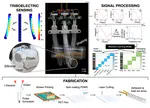Welcome to Zihan’s Website
Zihan Wang is postdoctoral reseacher at the University of California, Berkeley, Department of Mechanical Engineering. His research interests focus on sensing systems anda data solutions for embodied AI.
Education & Working Experience
Research topics include:
- Sensing systems for robots
- Data solutions for embodied AI
Featured Publications
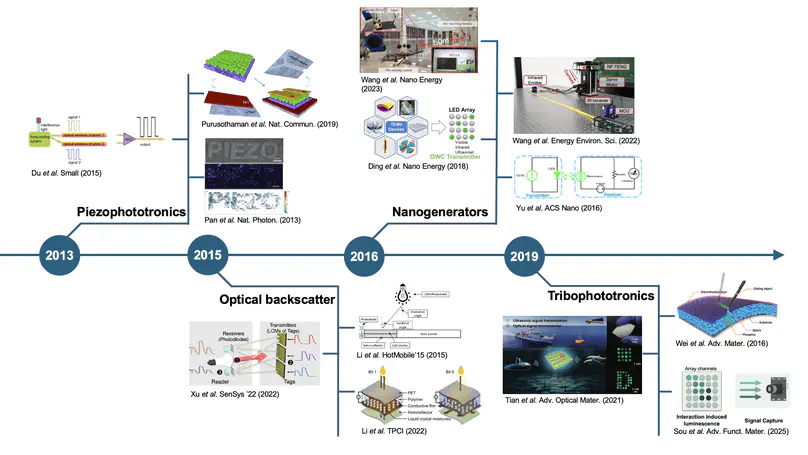
Modern optical communication systems, from fiber-optic networks to optical wireless communications, are fundamentally constrained by their reliance on external power sources. This perspective highlights explores the transformative potential of self-powered optical communication (SPOTComm), a paradigm-shift technology in which optical communication is achieved without relying on external power supplies. SPOTComm opens new avenues for building sustainable and maintenance-free communication nodes for the Internet of Things (IoT), particularly in power-constrained or remote environments. In light of this, recent major breakthroughs in this interdisciplinary field and identify key challenges that impeding SPOTComm’s wider adoption are reviewed. Specifically, three technical routes that establish SPOTComm link: 1) energy harvester-driven optical transmission, 2) direct mechanical-to-optical conversion, and 3) self-powered optical modulation are categorized. To enlighten future development, we offer a forward-looking vision of how materials and device innovations can overcome current limitations, ultimately enabling optical communication systems that are not only high-performance and secure, but also self-sustaining, scalable, and pervasive.
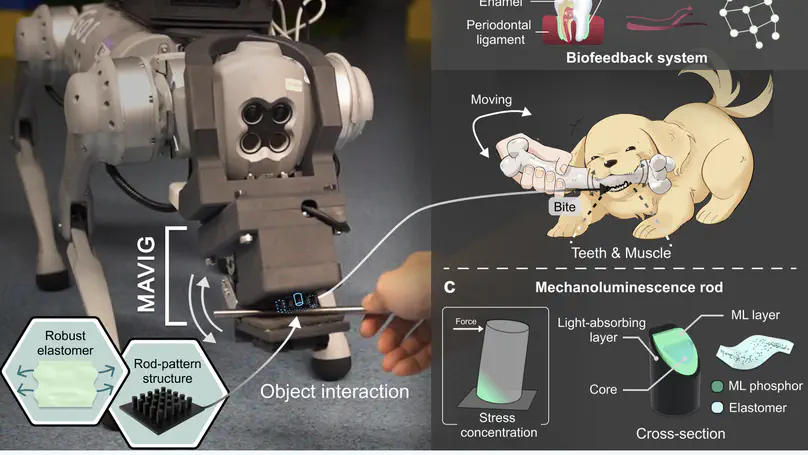
Event-driven sensors are essential for real-time applications, yet the integration of current technologies faces limitations such as high cost, complex signal processing, and vulnerability to noise. This work introduces a bio-inspired mechanoluminescence visuotactile sensor that enables standard frame-based cameras to perform event-driven sensing by emitting light only under mechanical stress, effectively acting as an event trigger. Drawing inspiration from the biomechanics of canine teeth, the sensor utilizes a rod-patterned array to enhance mechanoluminescent signal sensitivity and expand the contact surface area. In addition, a machine learning-enabled algorithm is designed to accurately analyze the interaction-triggered mechanoluminescence signal in real-time. The sensor is integrated into a quadruped robot’s mouth interface, demonstrating enhanced interactive capabilities. The system successfully classifies eight interactive activities with an average accuracy of 92.68%. Comprehensive tests validate the sensor’s efficacy in capturing dynamic tactile signals and broadening the application scope of robots in interaction with the environment.
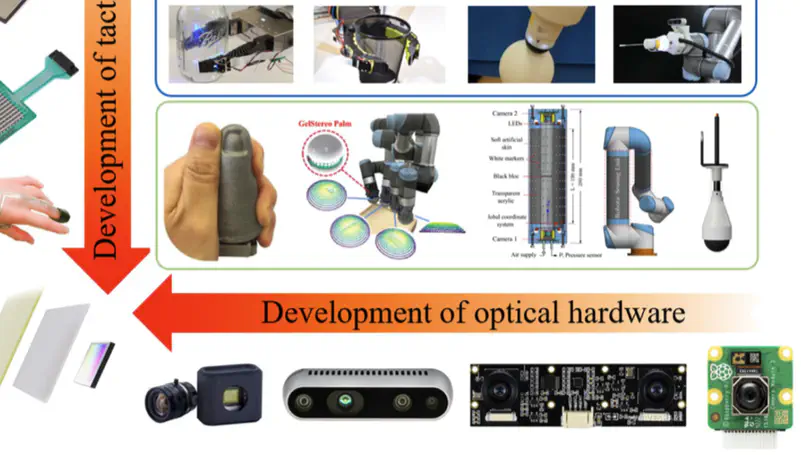
Tactile sensors, which provide information about the physical properties of objects, are an essential component of robotic systems. The visuotactile sensing technology with the merits of high resolution and low cost has facilitated the development of robotics from environment exploration to dexterous operation. Over the years, several reviews on visuotactile sensors for robots have been presented, but few of them discussed the significance of signal processing methods to visuotactile sensors. Apart from ingenious hardware design, the full potential of the sensory system toward designated tasks can only be released with the appropriate signal processing methods. Therefore, this paper provides a comprehensive review of visuotactile sensors from the perspective of signal processing methods and outlooks possible future research directions for visuotactile sensors.
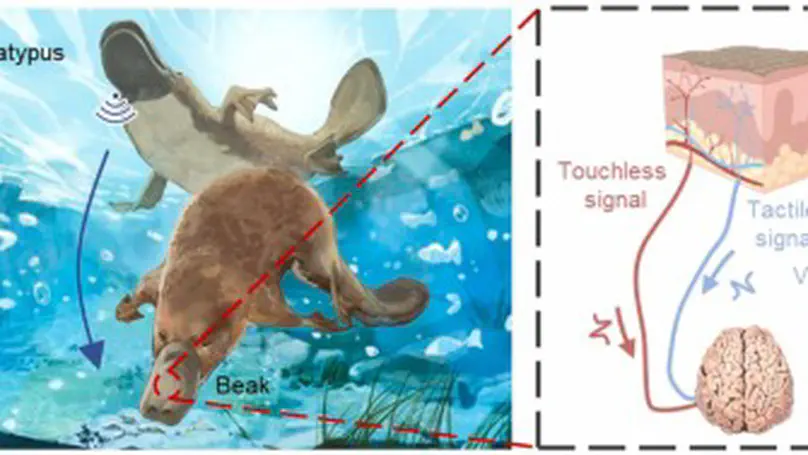
Advancement in human-robot interaction (HRI) is essential for the development of intelligent robots, but there lack paradigms to integrate remote control and tactile sensing for an ideal HRI. In this study, inspired by the platypus beak sense, we propose a bionic electro-mechanosensory finger (EM-Finger) synergizing triboelectric and visuotactile sensing for remote control and tactile perception. A triboelectric sensor array made of a patterned liquid-metal-polymer conductive (LMPC) layer encodes both touchless and tactile interactions with external objects into voltage signals in the air, and responds to electrical stimuli underwater for amphibious wireless communication. Besides, a three-dimensional finger-shaped visuotactile sensing system with the same LMPC layer as a reflector measures contact-induced deformation through marker detection and tracking methods. A bioinspired bimodal deep learning algorithm implements data fusion of triboelectric and visuotactile signals and achieves the classification of 18 common material types under varying contact forces with an ac- curacy of 94.4 %. The amphibious wireless communication capability of the triboelectric sensor array enables touchless HRI in the air and underwater, even in the presence of obstacles, while the whole system realizes high- resolution tactile sensing. By naturally integrating remote contorl and tactile sensing, the proposed EM-Finger could pave the way for enhanced HRI in machine intelligence.
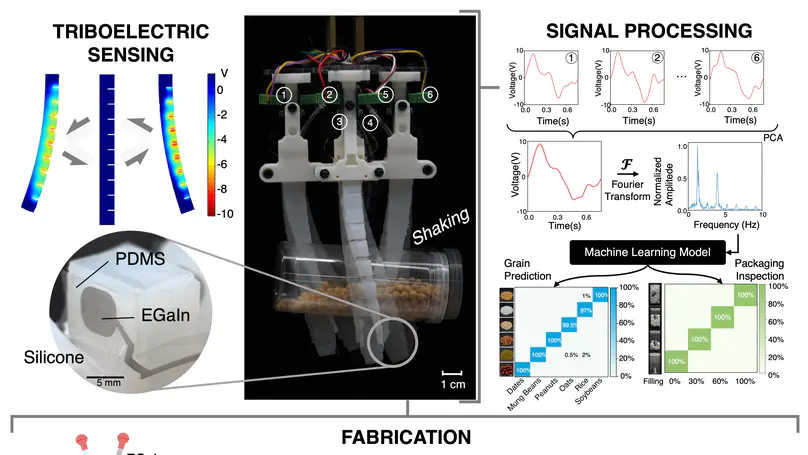
Vibration perception is essential for robotic sens- ing and dynamic control. Nevertheless, due to the rigorous demand for sensor conformability and stretchability, enabling soft robots with proprioceptive vibration sensing remains challenging. This paper proposes a novel liquid metal-based stretchable e-skin via a kirigami-inspired design to enable soft robot proprioceptive vibration sensing. The e-skin is fabricated into 0.1mm ultrathin thickness, ensuring its negligible influence on the overall stiffness of the soft robot. Moreover, the working mechanism of the e-skin is based on the ubiquitous triboelec- trification effect, which transduces mechanical stimuli without external power supply. To demonstrate the practicability of the e-skin, we built a soft gripper consisting of three soft robotic fingers with proprioceptive vibration sensing. Our experiment shows that the gripper can accurately distinguish the grain category (six grains with the same mass, 99.9% accuracy) and the packaging quality (100% accuracy) by simply shaking the gripped bottle. In summary, a soft robotic proprioceptive vibration sensing solution is proposed; it helps soft robots to have a more comprehensive awareness of their self-state and may inspire further research on soft robotics.
Recent Publications
Research Topics
Contact
- zihan.wang@berkeley.edu
- 2521 Hearst Ave, Berkeley, CA 94709
- Etchevery Hall 1113
